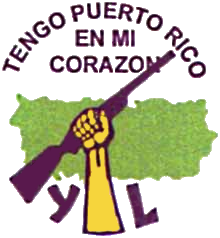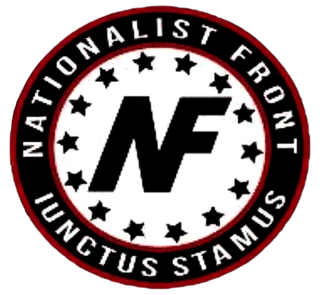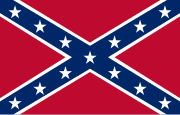
The Student Nonviolent Coordinating Committee was the principal channel of student commitment in the United States to the civil rights movement during the 1960s. Emerging in 1960 from the student-led sit-ins at segregated lunch counters in Greensboro, North Carolina, and Nashville, Tennessee, the Committee sought to coordinate and assist direct-action challenges to the civic segregation and political exclusion of African Americans. From 1962, with the support of the Voter Education Project, SNCC committed to the registration and mobilization of black voters in the Deep South. Affiliates such as the Mississippi Freedom Democratic Party and the Lowndes County Freedom Organization in Alabama also worked to increase the pressure on federal and state government to enforce constitutional protections.

Fredrick "Chairman Fred" Allen Hampton Sr. was an American activist. He came to prominence in his late teens and very early 20s in Chicago as deputy chairman of the national Black Panther Party and chair of the Illinois chapter. As a progressive African American, he founded the anti-racist, anti-classist Rainbow Coalition, a prominent multicultural political organization that initially included the Black Panthers, Young Patriots, and the Young Lords, and an alliance among major Chicago street gangs to help them end infighting and work for social change. A Marxist–Leninist, Hampton considered fascism the greatest threat, saying, "nothing is more important than stopping fascism, because fascism will stop us all."

The Young Lords, also known as the Young Lords Organization (YLO) or Young Lords Party (YLP), was a Chicago-based street gang that became a civil and human rights organization. The group aims to fight for neighborhood empowerment and self-determination for Puerto Rico, Latinos, and colonized people. Tactics used by the Young Lords include mass education, canvassing, community programs, occupations, and direct confrontation. The Young Lords became targets of the United States FBI's COINTELPRO program.

Helen Shiller is a former Alderman of the 46th ward in Chicago, Illinois. Shiller is also a published author, having written a 500-page book on her politics and activism in Chicago from 1971 to 2011. Shiller served in the Chicago City Council for six four-year terms, from 1987 to 2011. Shiller was elected to the City Council on her third attempt, as Harold Washington, Chicago's first black Mayor, was re-elected to his second term, and her election as alderman helped close the Council Wars era in Chicago government. Shiller has been described as "a reformer unafraid to take on the boys in power." A less flattering description is that she is "committed to liberal causes and destroying all within her path". Among her most significant impacts on Chicago were her advocacy for diverse, inclusive, affordable housing and helping craft Chicago's response to the HIV/AIDS crisis. Her commitment to fostering community development without displacement often brought Shiller into contention with some constituencies, real estate developers, and editorial boards. Shiller's oral history was collected by Pulitzer Prize-winning author and Uptown resident Studs Terkel in his 2003 book, Hope Dies Last. As she details in her own book, among her policy victories as a City Council member was: getting human rights legislation passed, having Chicago implement anti-apartheid legislation, creating a City Council Subcommittee on Domestic Violence, and building a unique mix-used development.

The Patriot Party was a socialist organization of the early 1970s in the United States that organized poor, rural whites in the Appalachian South and Pacific Northwest. The party was formed after a split with the Young Patriots Organization. The YPO's membership was drawn from street gangs of Appalachian whites in the Uptown neighborhood of Chicago, Illinois; it became politicized after working with the Young Lords, an ethnic Puerto Rican gang, and the African-American Black Panther Party.
The New Communist movement (NCM) was a diverse left-wing political movement during the 1970s and 1980s. The NCM were a movement of the New Left that represented a diverse grouping of Marxist–Leninists and Maoists inspired by Cuban, Chinese, and Vietnamese revolutions. This movement emphasized opposition to racism and sexism, solidarity with oppressed peoples of the third-world, and the establishment of socialism by popular revolution. The movement, according to historian and NCM activist Max Elbaum, had an estimated 10,000 cadre members at its peak influence.

The Brown Berets is a pro-Chicano paramilitary organization that emerged during the Chicano Movement in the late 1960s. David Sanchez and Carlos Montes co-founded the group modeled after the Black Panther Party. The Brown Berets was part of the Third World Liberation Front. It worked for educational reform, farmworkers' rights, and against police brutality and the Vietnam War. It also sought to separate the American Southwest from the control of the United States government.

The Free Breakfast for School Children Program, or the People’s Free Food Program, was a community service program run by the Black Panther Party that focused on providing free breakfast for children before school. The program began in January 1969 at Father Earl A. Neil's St. Augustine's Episcopal Church, located in West Oakland, California and spread throughout the nation. This program was an early manifestation of the social mission envisioned by Black Panther Party founders Huey P. Newton and Bobby Seale along with their founding of the Oakland Community School, which provided high-level education to 150 children from impoverished urban neighborhoods. The breakfasts formed the core of what became known as the party's Survival Programs. Inspired by contemporary research about the essential role of breakfast for optimal schooling and the belief that alleviating hunger and poverty was necessary for Black liberation, the Panthers cooked and served food to the poor inner city youth of the area. The service created community centers in various cities for children and parents to simultaneously eat and learn more about black liberation and the Black Panther Party's efforts.

I Wor Kuen was a radical Marxist Asian American collective that originally formed in 1969 in New York City's Chinatown. Borrowing from the ideologies of the Young Lords and the Black Panthers, IWK organized several community programs and produced a newsletter series promoting self-determination for Asian Americans. Initially consisting of students from Columbia University, the group worked in conjunction with residents of New York City's Chinatown to address the community's needs for healthcare reform, draft counseling, and childcare. The group expanded nationally with the Red Guard Party in San Francisco in 1972 to create a national organisation.

The Black Panther Party was a Marxist–Leninist and black power political organization founded by college students Bobby Seale and Huey P. Newton in October 1966 in Oakland, California. The party was active in the United States between 1966 and 1982, with chapters in many major American cities, including San Francisco, New York City, Chicago, Los Angeles, Seattle, and Philadelphia. They were also active in many prisons and had international chapters in the United Kingdom and Algeria. Upon its inception, the party's core practice was its open carry patrols ("copwatching") designed to challenge the excessive force and misconduct of the Oakland Police Department. From 1969 onward, the party created social programs, including the Free Breakfast for Children Programs, education programs, and community health clinics. The Black Panther Party advocated for class struggle, claiming to represent the proletarian vanguard.
The Rainbow Coalition was an anti-racist, working class multicultural movement founded April 4, 1969, in Chicago, Illinois by Fred Hampton of the Black Panther Party, along with William "Preacherman" Fesperman of the Young Patriots Organization and José Cha Cha Jiménez, founder of the Young Lords. It was the first of several 20th century black-led organizations to use the "rainbow coalition" concept.
The Southern Student Organizing Committee (SSOC) was a student activist group in the southern United States during the 1960s, which focused on many political and social issues including: African-American civil rights, opposition to the Vietnam War, workers' rights, and feminism. It was intended, in part, to be Students for a Democratic Society (SDS) for Southerners and Student Nonviolent Coordinating Committee (SNCC) for white students – at a time when it was dangerous for SDS to attempt to organize in the Deep South and when SNCC was starting to discuss expelling white volunteers. It was felt that students at the traditionally white and black colleges in the South could be more effectively organized separately than in an integrated student civil rights organization; however, this was controversial and initially opposed by advisors like Anne Braden. Sue Thrasher and Archie Allen of the Christian Action Fellowship were among the founders of the group, with the support of Bob Moses and others. At its inception, the group had close ties to controversial Louisville, Kentucky radicals Carl and Anne Braden and their organization, the Southern Conference Education Fund, but a deliberate effort was later made to put some distance between the SSOC and the Bradens to avoid the appearance that the SSOC was a Communist front.
José "Cha Cha" Jiménez is a political activist and the founder of the Young Lords Organization, a Chicago-based street gang that became a civil and human rights organization. Started in September 23, 1968, it was most active in the late 1960s and 1970s.

Jewish Council on Urban Affairs (JCUA) is a nonprofit organization based in Chicago that mobilizes the Jewish community of the region to advance racial and economic justice. JCUA partners with diverse community groups across the city and state to combat racism, antisemitism, poverty and other forms of systemic oppression, through grassroots community organizing, youth education programs, and community development.

Marion Nzinga Stamps was an African-American community activist who fought for equal rights of public housing residents in the Cabrini-Green housing project on the Near-North Side of Chicago, Illinois. She helped to elect Chicago's first African-American mayor, Harold Washington, by organizing a massive voter registration drive in 1983. She was aggressive in her fights to make sure that residents of housing developments had voices regarding their violent and harsh living conditions in public housing. In 1993, Stamps began working with many gang leaders throughout Chicago to help end growing violence. In 1994 she and others successfully navigated what remains the only citywide gang truce in Chicago's history.
African Americans', or Black Americans', access and use of birth control are central to many social, political, cultural and economic issues in the United States. Birth control policies in place during American slavery and the Jim Crow era highly influenced Black attitudes toward reproductive management methods. Other factors include African-American attitudes towards family, sex and reproduction, religious views, social support structures, black culture, and movements towards bodily autonomy.

The United Front Against Fascism (UFAF) was an anti-fascist conference organized by the Black Panther Party and held in Oakland, California, from July 18 to 21, 1969.

Redneck Revolt is an American far-left socialist political group that organizes predominantly among white working-class people. The group supports gun rights and members often openly carry firearms. Its political positions are anti-capitalist, anti-racist and anti-fascist. Founded in Kansas in 2009, members were present at several protests against Donald Trump and against the far-right in 2017.

The Nationalist Front is a loose coalition of radical right and white supremacists. The coalition was formed in 2016 by leaders of the neo-Nazi groups National Socialist Movement (NSM) and Traditionalist Worker Party (TWP). Its aim was to unite white supremacist and white nationalist groups under a common umbrella. Originally the group was named the Aryan Nationalist Alliance and was composed of neo-Nazi, Ku Klux Klan and White power skinhead organizations.
The city of Chicago, Illinois is home to a significant Appalachian population. The Appalachian community has historically been centered in the neighborhood of Uptown. Beginning after World War I, Appalachian people moved to Chicago in droves seeking jobs. Between 1940 and 1970, approximately 3.2 million Appalachian and Southern migrants settled in Chicago and elsewhere in the Midwest. Due to immigration restrictions in the 1920s, personnel managers in Chicago encouraged working-class migrants from the Upland South to fill those jobs. The culture of Chicago has been significantly influenced by the culture, music, and politics of Appalachia. The majority of people of Appalachian heritage in Chicago are white or black, though Appalachian people can be of any race, ethnicity, or religion.














